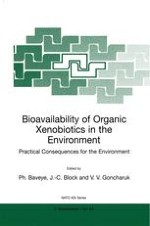In the continuing fight against organic environmental xenobiotics, the initial success attributed to bioremediation has paled, in part due to the low availability of xenobiotics entrapped within a soil or sediment matrix. This has generated a very significant wave of interest in the bioavailability issue. However, much experimental evidence is puzzling or contradictory, mechanistic theories are embryonic, and implications for the practice of bioremediation or concerning the natural fate of xenobiotics are still tentative.
The debate in Europe and the USA is vigorous. Eastern Europe, following the liberalisation of the economy and political life, is evolving in a similar direction. In many cases, however, limited access to literature sources, severe language barriers, and the lack of a strong pluridisciplinary tradition are hampering the adoption of state of the art techniques.
Originally intended to allow scientists in East European countries to become acquainted with the key aspects of the bioavailability debate that is unfolding in the scientific literature in the West, and with its implications for bioremediation efforts, the present book presents a very complete coverage of the theoretical and practical aspects of the (limited) bioavailability of organic xenobiotics in the environment.
